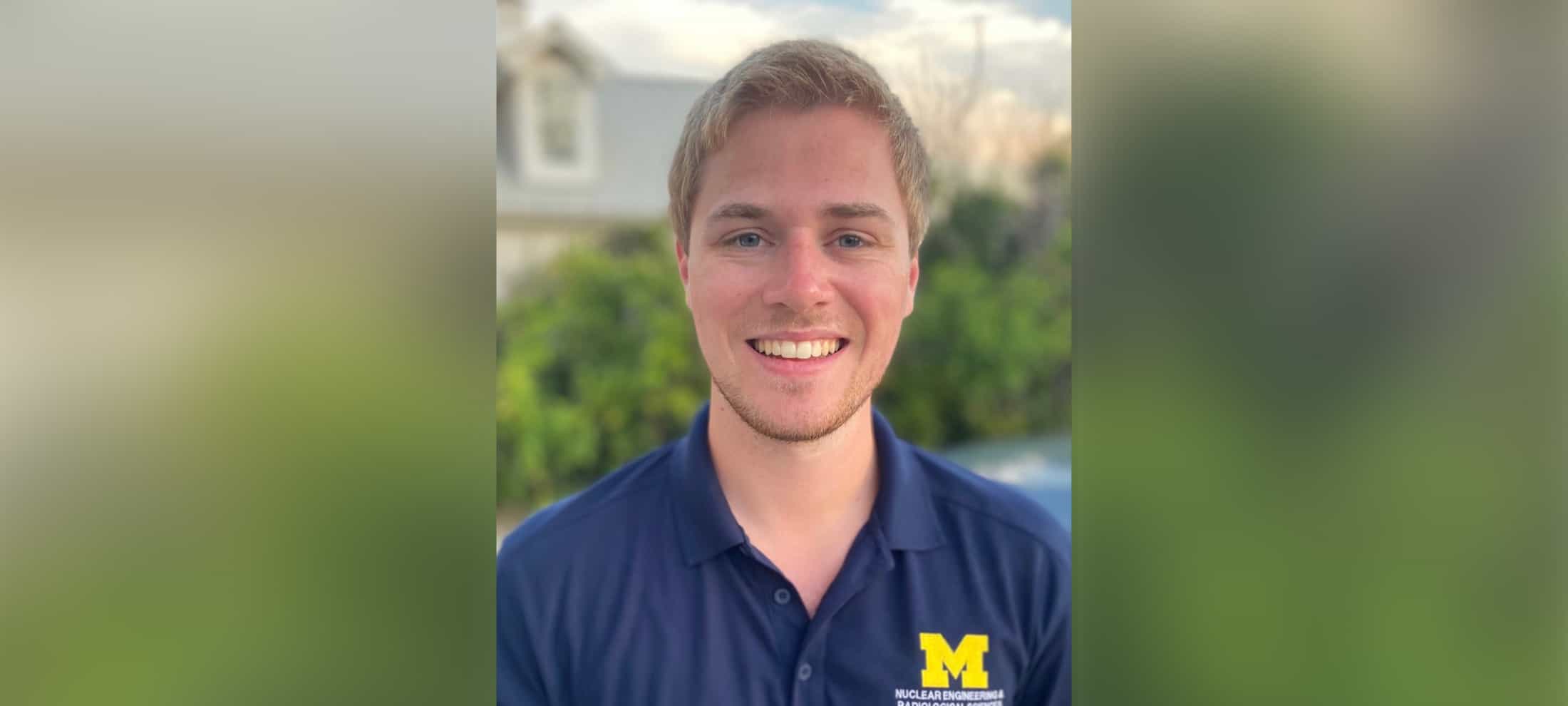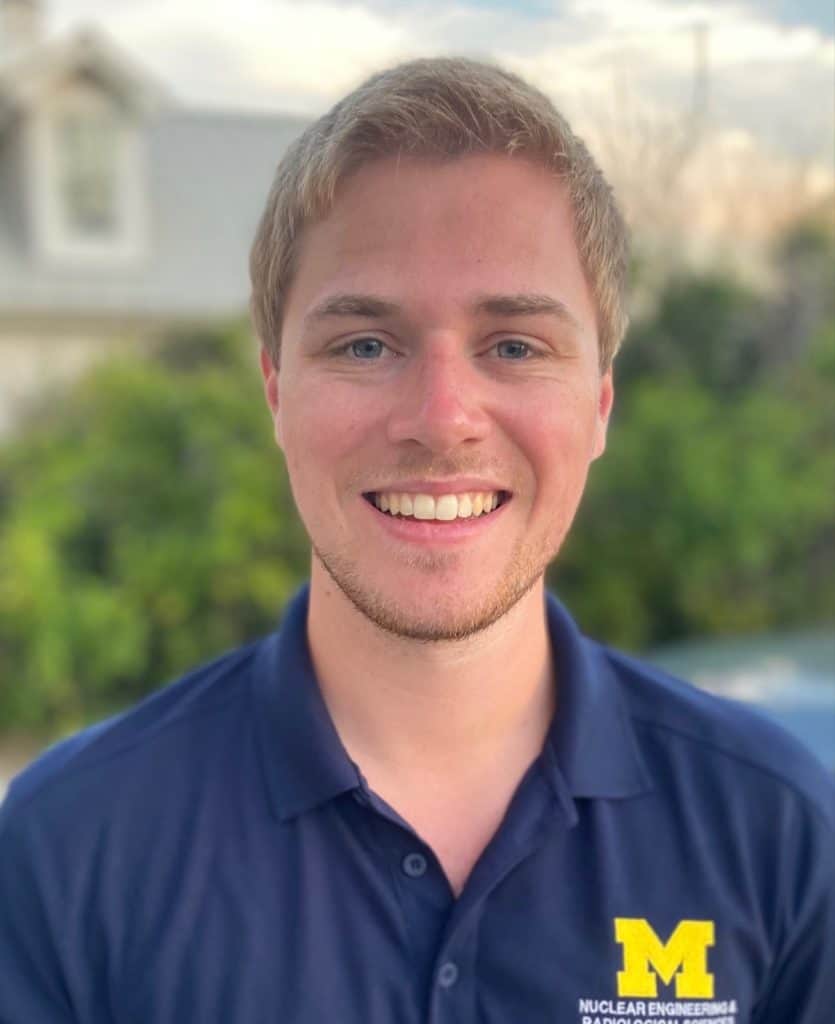
Q&A with Brendan Sporer
Brendan won a Best Paper Award at the IEEE Pulsed Power Conference.

Brendan won a Best Paper Award at the IEEE Pulsed Power Conference.

Brendan Sporer, a PhD student in the U-M Department of Nuclear Engineering & Radiological Sciences (NERS), was given a best paper/presentation award at the annual Institute of Electrical and Electronics Engineers (IEEE) Pulsed Power Conference (PPC). Students across the country submitted poster presentations and a committee of pulsed-power experts selected the three best. Brendan’s award-winning poster is titled, “High-density, High-field FRC Formation Studies using the MAIZE Linear Transformer Driver.”
How do you feel about winning?
Happy and proud that people find the high-field FRC project interesting, because I find it very exciting and I have put a lot of work into developing it quickly. I’ve recently made a transition into this project from another project that I didn’t find as exciting, so this feels validating!
How did you end up studying nuclear engineering at Michigan?
I’m from eastern PA and went to Penn State for undergrad, where I became interested in nuclear engineering and specifically controlled nuclear fusion research. My first time applying to U-M’s PhD program I didn’t get in, and spent a year working at a sandwich shop before I could apply again. Luckily, I got in the second time, and my interest in controlled fusion has grown in the pulsed-power field. I enjoy watching movies/shows, doing projects involving 3D printing + Arduino, woodworking, beer-league sports, spending time with my fiance, and I have two cats.
What current projects are you working on?
I work in the Plasma, Pulsed-Power, and Microwave Lab at Michigan where I study pulsed-power with applications to fusion research. I recently received the Laboratory Residency Graduate Fellowship (LRGF). With this new fellowship, I have started a project to create high-density field reversed configurations (FRCs) using pulsed-power machines here at Michigan and at Sandia National Labs. FRCs are a type of compact plasma toroid, which can be compressed by pulsed-power driven implosions at Sandia to produce significant fusion energy release.
What are all the ways you’re involved with NERS?
Primarily I am just a very passionate PhD student researcher, but I have done some grading for introductory NERS classes. I am also a member of the Michigan Institute for Plasma Science and Engineering (MIPSE), participating in the annual MIPSE graduate symposium, pursuing the MIPSE certificate, and I have received the MIPSE fellowship.
Do you have any plans or goals for the future? What do you hope to do with your Ph.D. from NERS?
I’m very interested in controlled fusion research. I think technological advances in just the last few decades—plus growing concern over climate change—have finally made fusion feasible for energy generation in the first half of the 21st century, and space propulsion in the second half. I would like to work at either a national laboratory or private company pursuing research to this end. I am especially excited about recent advances at the private fusion companies Helion and Commonwealth Fusion Systems, to which I would like to apply after receiving my PhD.
Anything else you’d like to add?
I would like to thank Prof. John Foster and Program Manager Garnette Roberts for helping me get accepted to the NERS PhD program in 2018, as well as my advisor Dr. Ryan McBride for providing advice, direction, and funding over the last few years.
Please provide a headshot.